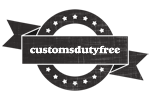Morocco is a country located in North Africa. It has a coast on the Atlantic Ocean that reaches past the Strait of Gibraltar into the Mediterranean Sea. It is bordered by Spain, Algeria, and Western Sahara. Much of Morocco is mountainous. The Atlas Mountain and Rif Mountains are located on the northern coast and interior. The government system is a monarchy; the chief of state is the king, and the head of government is the prime minister. Morocco is a member of the League of Arab States (Arab League).
In the 1980s, Morocco was a heavily indebted country before pursuing austerity measures and pro-market reforms, overseen by the IMF. Since taking the throne in 1999, King MOHAMMED VI has presided over a stable economyThe management of money, currency and trade of a nation. The... marked by steady growth, low inflationNormally referring to the economy of a country, inflation is..., and gradually falling unemploymentAn economic situation in which jobless people, often those w..., although poor harvests and economic difficulties in Europe contributed to an economic slowdown. To boost exports, Morocco entered into a bilateral Free Trade AgreementAn agreement, usually between countries, to limit or change ... with the US in 2006 and an Advanced Status agreement with the EU in 2008. In late 2014, Morocco eliminated subsidies for gasoline, diesel, and fuel oil, dramatically reducing outlays that weighted on the country’s budgetAllocation of funds or the estimation of costs for a departm... and current accountA bank account which can be used to make deposits, withdrawa.... Subsidies on butane gas and certain food products remain in place. Morocco also seeks to expand its renewable energy capacity with a goal of making renewable more than 50% of installed electricity generation capacity by 2030.
Through a foreign exchange rateAlso known as Foreign Exchange Rate. The rate, which can var... anchor and well-managed monetary policy, Morocco held inflationNormally referring to the economy of a country, inflation is... rates to industrial country levels over the past decade. InflationNormally referring to the economy of a country, inflation is... in 2000 and 2001 were below 2%. Despite criticism among exporters that the dirham has become badly overvalued, the current accountA bank account which can be used to make deposits, withdrawa... deficit remains modest. Foreign exchange reserves were strong, with more than $7 billion in reserves at the end of 2001. The combination of strong foreign exchange reserves and active external debtAlso known as Foreign Debt. Money that is owed by the govern... management gave Morocco the capacity to service its debtMoney owed to another person or organisation, such as a loan.... Current external debtAlso known as Foreign Debt. Money that is owed by the govern... stands at about $16.6 billion.
Economic growthAn increase in a region's or nation's production of goods an..., however, has been erratic and relatively slow, partially as a result of an over-reliance on the agricultural sector. Agriculture production is extremely susceptible to rainfall levels and ranges from 13% to 20% of GDP. Given that 36% of Morocco’s population depends directly on agriculture production, droughts have a severe knock-on effect to the economyThe management of money, currency and trade of a nation. The.... Two successive years of drought led to a 1% incline in real GDP in 1999 and stagnation in 2000. Better rains during the 2000 to 2001 growing season led to an 6.5% growth rate in 2001. Growth in 2006 went above 9%, this was achieved by a booming real estateAlso called Realty. Property consisting of land with permane... marketThe commercial activity of buying and selling goods and serv.... Over the long term, Morocco will have to diversify its economyThe management of money, currency and trade of a nation. The... away from [agriculture] to develop a more stable economic basis for growth.
Important Details
- Country ISO3 : MAR
- Country Code : 504
- Income Group : Lower middle income
- Lending Category : IBRD
- Region : Middle East & North Africa
- Currency Unit: Moroccan dirham
- WTO Member : Yes
- TradeThe buying and selling or exchange of goods and services. Th... organisations : WTO, CAEU
- world rank : 85
- Regional Ranking : 9th in the Middle East/North Africa Region

